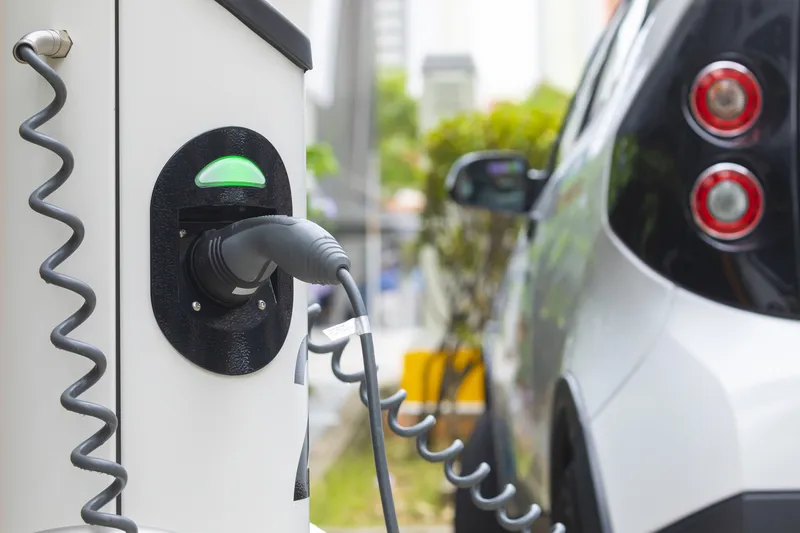Vehicles are electrifying at a breakneck speed and they are being completely reinvented with developments in many components and systems, according to a report by IDTechEx Research. Disruptive change and significant technological innovation is now being seen across all forms of electric vehicles for land, water and air. The fruits of all this are spectacular – from the vehicles themselves to over US$500 billion market opportunity that will be created by 2026.
IDTechEx Research analyses and forecasts eve
December 18, 2015
Read time: 2 mins
Vehicles are electrifying at a breakneck speed and they are being completely reinvented with developments in many components and systems, according to a report by 6582 IDTechEx Research. Disruptive change and significant technological innovation is now being seen across all forms of electric vehicles for land, water and air. The fruits of all this are spectacular – from the vehicles themselves to over US$500 billion market opportunity that will be created by 2026.
IDTechEx Research analyses and forecasts every sector of the hybrid and pure electric vehicle market in its master report Electric Vehicle Forecasts, Trends and Opportunities 2016-2026 and focuses on sub-sectors in its many other EV industry reports.
Batteries, supercapacitors, energy harvesting, wireless charging, power electronics and structural electronics are all evolving and breakthroughs are appearing more commonly in other vehicles such as boats and planes, before cars. This is driving progress across the whole EV market and now many profitable niche markets are emerging just as there’s been a shake-up in the leading sectors. IDTechEx Research finds that the industrial and commercial sector is now bigger and more profitable than electric cars, and will remain so for at least eight more years. For example, the market for medium and large hybrid and pure electric buses will grow rapidly to over US$72 billion by 2025. Other sectors will also see lucrative growth – construction and agriculture, micro EVs, industrial on-water craft, and drones/UAVs will each achieve between 20 per cent and 65 per cent CAGR over the coming decade.
Electric Vehicle Forecasts, Trends and Opportunities 2016-2026 is uniquely comprehensive in application and geographical spread. It presents data and analysis based on years of expert knowledge, thorough primary research, attendance of many industry events and direct interviews with vehicle and component manufactures. Only IDTechEx provides ten year forecasts across 45 electric vehicle sectors giving unit numbers, average vehicle prices and total market value. With regular updates new sectors are added as they become substantial, the latest include motorcycles and car-like micro EVs (homologated as quadricycles in Europe). The report also includes details of market drivers, technology trends and a comparison of manufacturers.
IDTechEx Research analyses and forecasts every sector of the hybrid and pure electric vehicle market in its master report Electric Vehicle Forecasts, Trends and Opportunities 2016-2026 and focuses on sub-sectors in its many other EV industry reports.
Batteries, supercapacitors, energy harvesting, wireless charging, power electronics and structural electronics are all evolving and breakthroughs are appearing more commonly in other vehicles such as boats and planes, before cars. This is driving progress across the whole EV market and now many profitable niche markets are emerging just as there’s been a shake-up in the leading sectors. IDTechEx Research finds that the industrial and commercial sector is now bigger and more profitable than electric cars, and will remain so for at least eight more years. For example, the market for medium and large hybrid and pure electric buses will grow rapidly to over US$72 billion by 2025. Other sectors will also see lucrative growth – construction and agriculture, micro EVs, industrial on-water craft, and drones/UAVs will each achieve between 20 per cent and 65 per cent CAGR over the coming decade.
Electric Vehicle Forecasts, Trends and Opportunities 2016-2026 is uniquely comprehensive in application and geographical spread. It presents data and analysis based on years of expert knowledge, thorough primary research, attendance of many industry events and direct interviews with vehicle and component manufactures. Only IDTechEx provides ten year forecasts across 45 electric vehicle sectors giving unit numbers, average vehicle prices and total market value. With regular updates new sectors are added as they become substantial, the latest include motorcycles and car-like micro EVs (homologated as quadricycles in Europe). The report also includes details of market drivers, technology trends and a comparison of manufacturers.









